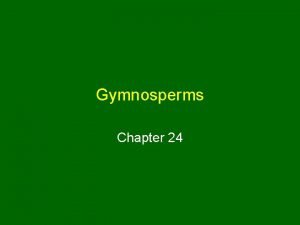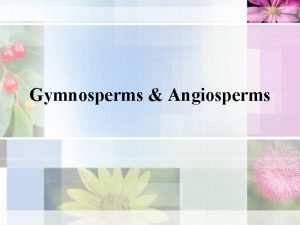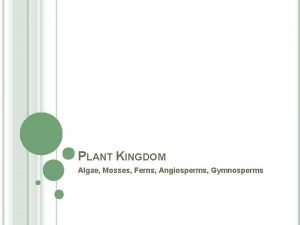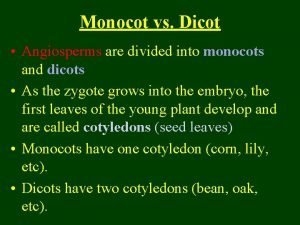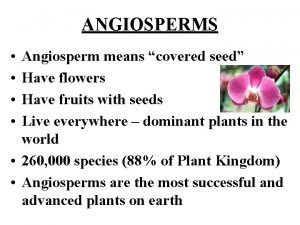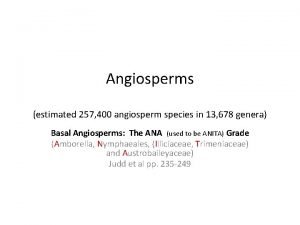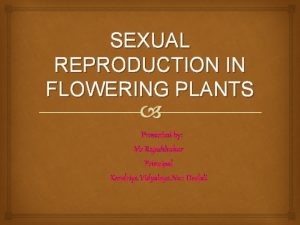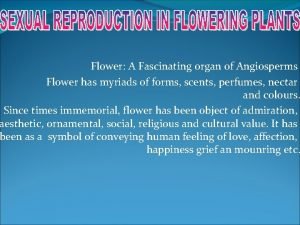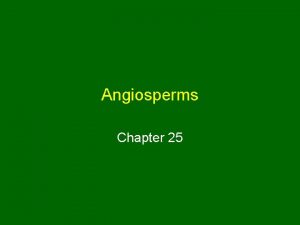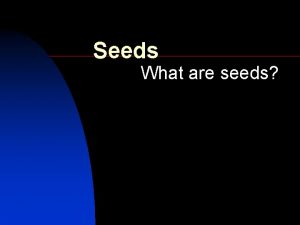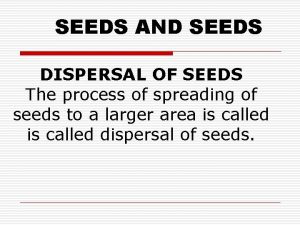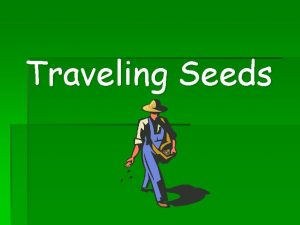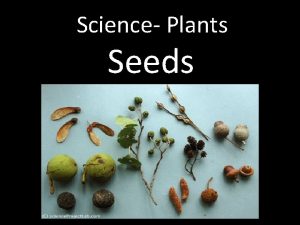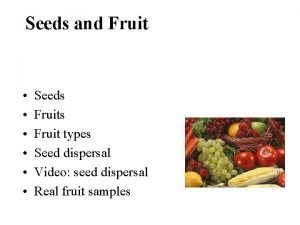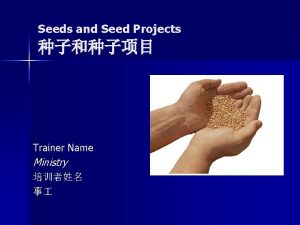Seeds of Angiosperms Seed I Seed What part








- Slides: 8

Seeds of Angiosperms

Seed I. Seed: What part of the female reproductive system, of an angiosperm, develops into a seed? • A ripened ovule • Made up of seed coat, endosperm, and embryo A. Seed Coat: A tough, protective covering that develops from the wall of the ovule. Hilium- scar on the seed coat marking the spot where the ovule attached to the ovary B. Endosperm: What is the main function of the endosperm? Food storage tissue

Seed (cont…) • • C. Embryo: Embryo is composed of cotyledons, epicotyl, hypocotyl, radicle. Cotyledon- modified leaves which store food Epicotyl- in some plants, develops into leaves and upper part of stem Hypocotyl- in some plants, develops into lower part of the stem Radicle- in all plants, develops into roots

Seed Dispersal II. Seed Dispersal: What are some ways in which seeds can be dispersed? ** Fruits are specialized for aiding in the dispersal of seeds. • Fruits or seeds are carried by wind (ex. - Dandelion) • Fruit or seeds carried on bodies of animals • Animals eat fruit and later eliminate the seeds

Seed Dormancy 1. Seed Dormancy: **A resting period in which the seed will not sprout, even if all the necessary conditions are present. ** The length of the resting period is different for each seed, even within a single species. What do you think are some of the reasons for seed dormancy? 1. Seed coat does not allow water, and or O 2, to reach embryo 2. Seed coat is too strong for embryo to break through 3. Chemical inhibitors prevent sprouting

Seed Germination I. Germination: Conditions Necessary for Germination • Resting period has ended • Sufficient moisture • Proper temperature • Sufficient oxygen • In some cases, light is required

Summary Describe three differences between monocots and dicots. Once double fertilization has occurred, what do the ovule and ovary develop into? How can seeds be dispersed?

